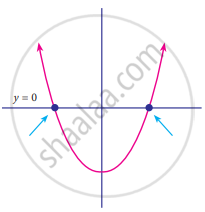Advertisements
Advertisements
प्रश्न
If p(x) = x + 3, then p(x) + p(–x) is equal to ______.
विकल्प
3
2x
0
6
उत्तर
If p(x) = x + 3, then p(x) + p(–x) is equal to 6.
Explanation:
Given p(x) = x + 3,
Put x = – x in the given equation, we get p(– x) = – x + 3
Now, p(x) + p(– x) = x + 3 + (– x) + 3 = 6
APPEARS IN
संबंधित प्रश्न
Find the value of the polynomial 5x – 4x2 + 3 at x = 0.
Verify whether the following zeroes of the polynomial are indicated against them.
p(x) = 5x – π, `x = 4/5`
Verify whether the indicated numbers is zeroes of the polynomials corresponding to them in the following case:
`f ( x ) = 5x - pi , x = 4/5`
Find the zero of the polynomial of the following:
q(y) = 2y – 3
Verify whether the following are zeros of the polynomial, indicated against them, or not
p(x) = x3 – 1, x = 1
Verify whether the following are zeros of the polynomial, indicated against them, or not
p(x) = ax + b, x = `(-"b")/"a"`
Find the number of zeros of the following polynomial represented by their graph

Zero of the zero polynomial is ______.
–3 is a zero of x – 3
If a, b, c are all non-zero and a + b + c = 0, prove that `a^2/(bc) + b^2/(ca) + c^2/(ab) = 3`.
